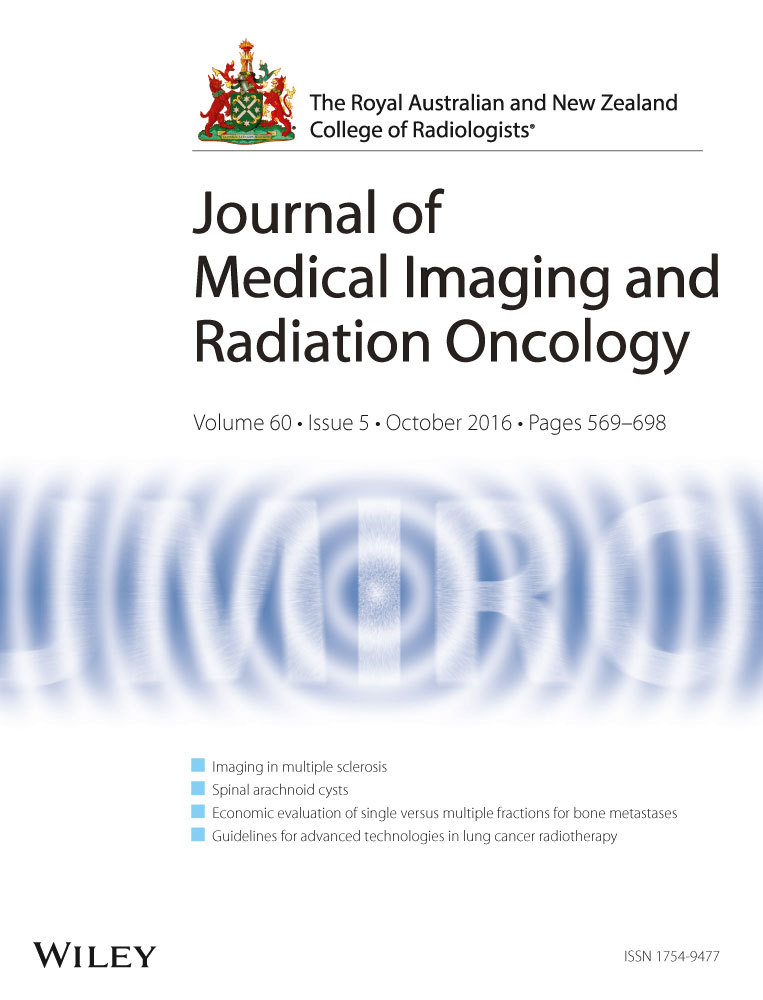Lung cancer radiation therapy in Australia and New Zealand: Patterns of practice
Abstract
Introduction
The RANZCR Faculty of Radiation Oncology Lung Interest Cooperative (FROLIC) surveyed patterns of lung cancer radiation therapy practice for non−small cell (NSCLC) and small cell lung cancer (SCLC) to evaluate current patterns of care and potential for improvement.
Methods
In October 2014, Radiation Oncologists (ROs) from all 62 departments in Australia and New Zealand were invited to a web-based survey directed at those treating lung cancer. Questions covered current radiation therapy practice as well as quality measures.
Results
Fifty-eight per cent of respondents used 4D-CT simulation. For curative treatment, 98% employed 3D-CRT and 34% intensity modulated radiotherapy (IMRT) techniques. Treatment verification was primarily performed using cone-beam CT (86%). In NSCLC, the commonest curative dose-fractionation regime was 60 Gy/30# (96%) and for palliative intent, 30 Gy/10# (76%). Forty-four per cent treated patients with stereotactic ablative body radiotherapy (SABR) and half treated central tumours with this technique. In fit patients with synchronous solitary brain metastases, 80% would give radical treatment. For curative-intent SCLC, 45–50.4 Gy/25–28# (61%) and 45 Gy/30#/1.5 Gy b.d. (48%) were used. Ninety-four per cent discussed lung cancer patients at multidisciplinary meetings. Contours were peer-reviewed by 74% and 50% for conventional fractionation and SABR respectively.
Conclusion
A significant proportion of ROs did not have access to 4D-CT. The majority used 3D image verification and consistently prescribed evidence based doses. A significant number did not participate in peer-review of contours. Practice in IMRT and synchronous oligo-metastatic disease is variable and should be an area of future research. Utilising survey findings, FROLIC is developing consensus recommendations to guide practice.




